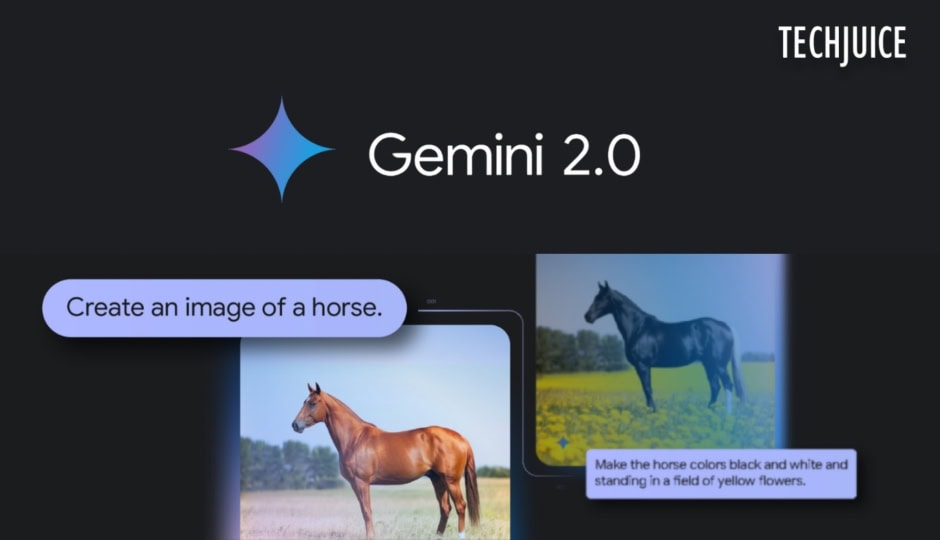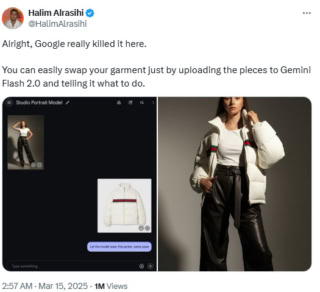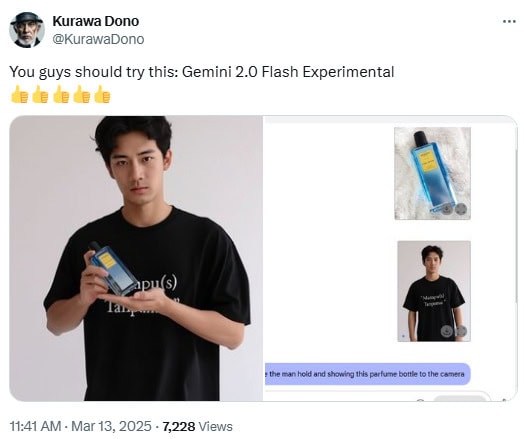Google’s Gemini 2.0 Flash Redefines Image Editing with Advanced AI; End of Photoshop, Canva?

Google has officially launched native image generation in its Gemini 2.0 Flash model, marking a major advancement in artificial intelligence. This new feature operates as an integrated AI model that is operated through Google AI Studio and Gemini API without imposing any fees for the creation of text and images.
While the impending Gemini 2.0 Flash platform has the potential to revolutionise the development of digital content, it also has the potential to infiltrate existing markets that are currently dominated by platforms such as Canva and Photoshop.
Key Features of Gemini 2.0
Story and Illustration Generation
Creators utilise Gemini 2.0 Flash to generate illustrated stories with identical characters and matched illustrations. Users can react to the content, prompting artists to make immediate modifications to tale structure and artistic techniques.
Conversational Image Editing
The AI enables users to execute multistep editing using text instructions, which improves image quality. The system removes the requirement for users to have prior picture editing experience.
Contextually Accurate Image Generation
Unlike many AI models, Gemini 2.0 Flash enables it to create realistic visuals through the integration of world knowledge in its operations. The model displays proficiency in describing recipes through visualizations which replicate actual ingredients appropriately.
Enhanced Text Rendering
The model stands out because it successfully generates text which is both legible and proper in spelling inside images. The model outperforms other AI technologies because it addresses text accuracy and positioning difficulties.
Public Reaction
Social media users have quickly tested Gemini 2.0 Flash, and early reactions suggest that it may disrupt the image-editing industry. Users on X (formerly Twitter) have shared their experiences with the model, demonstrating its ability to seamlessly alter clothing colors, merge separate images, and even edit photos in real-time based on prompts.
One user praised the model’s ability to swap garments by simply uploading an image of the desired clothing item and giving a text command: “Alright, Google really killed it here. You can easily swap your garment just by uploading the pieces to Gemini Flash 2.0 and telling it what to do.”

Another user showcased how Gemini 2.0 Flash seamlessly combined two separate images—one of a man and another of a perfume bottle—into a single, realistic composition: “You guys should try this: Gemini 2.0 Flash Experimental”

However, the model has also sparked controversy. Some users discovered that Gemini 2.0 Flash can remove watermarks from stock images, raising concerns about intellectual property violations. User demonstrated this issue: “New skill unlocked: Gemini 2 Flash model is really awesome at removing watermarks in images!”

The deployment of artificial intelligence for generating images has triggered thorough evaluations regarding its ethical and legal boundaries. The model’s capacity to bypass copyright laws poses potential challenges for Google and content publishers.
Gemini 2.0 Flash establishes Google as the industry leader in AI-driven multimedia creation. The platform’s overall impact on digital design, advertising, and social media will become clearer as user experimentation increases. The growth of AI-powered image generation is accelerating between now and the release of Gemini 2.0 Flash, and the possible influence on traditional design tools is unknown.
Sharing clear, practical insights on tech, lifestyle, and business. Always curious and eager to connect with readers.


 3 min read
3 min read
















